June 2015 Issue
Feature
Advanced Wireless and Communication Research Center (AWCC), University of Electro-Communications, Tokyo.
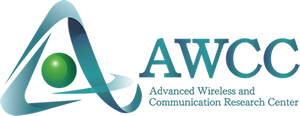
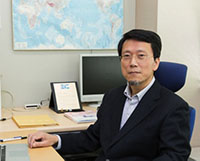
The Advanced Wireless Communication Research Center (AWCC) was launched in April 2005 with the aims of establishing a global hub for wireless communications; advancing education in wireless technology; industrial collaboration and technology transfer; and nurturing young engineers with strong emphasis on both theoretical and experimental aspects of wireless communications. In April 2015, the Center was re-launched as the Advanced Wireless and Communication Research Center with the same abbreviation, AWCC, to enhance its remarkable range of activities over the previous ten years. With funding of approximately 1000 million yen over nine years, the center consists of 3 full time, 6 concurrent, 18 cooperative, and 5 visiting professors. In addition there are 8 visiting professors from industry and more than 100 graduate students, post-doctoral and research fellows. The center actively contributes to academic societies and publishes more than 150 papers annually in top journals and proceedings of international conferences.
"The AWCC is harnessing UEC's strengths in education and research in radio communications," says Professor Yasushi Yamao, Director of AWCC. "We have staff with a wide range of expertise from both UEC and industry. Our vision is the realization of 'ambient wireless in connected community'."
The AWCC organizes regular seminars and workshops with the highlight of 2014 being the 'Tokyo Wireless Technology Summit' held in March 2014. The meeting focused on the next major phase of mobile telecommunications called 5th generation (5G) and attracted approximately 240 participants from all over the world.
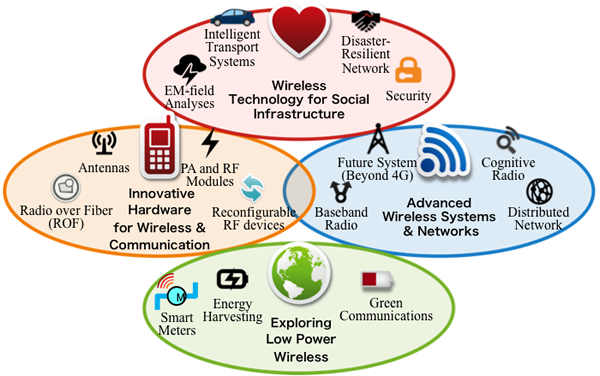
Research at AWCC is focused on four areas:
Wireless technology for social infrastructure with emphasis on intelligent transport systems, disaster resilient networks, analysis of electromagnetic fields, and security.
Innovative hardware for wireless and communication where the keywords are antennas, power amplifiers (PA) and radio frequency front-end (RF), radio over fiber (ROF), and reconfigurable RF devices.
Advanced wireless systems and networks with specific themes of future systems and beyond 4G, cognitive radio for ultimate usage of radio spectrum, distributed networks for example sensors and automobiles, and baseband radio.
Exploring low power wireless systems for applications including green communications, energy harvesting, smart meters, and low power devices such as low power RF circuits and low power MCUs for sensor nodes in wireless sensor networks of IoT.
Specific projects
Intelligent transport systems (ITS) for vehicle to vehicle and vehicle to infrastructure (Lead by Professor Yasushi Yamao)
The goal is establishing highly reliable and low-delay wireless communications for safe and automated driving by resolving issue of severe propagation on dense urban road, including shadowing loss caused by surrounding buildings and large-sized vehicles, as well as hidden terminal problems due to heavy traffic.
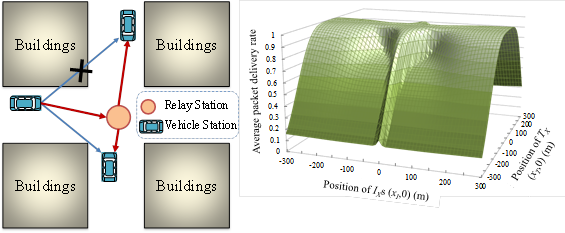
Large scale wireless price tag system
(Professor Yasushi Yamao)
The ultimate aim of this project is to produce an ultra-low power wireless price tag system for supermarkets with more than 10,000 tags with batteries that can operate for seven years. Here, the main technological hurdle to overcome is synchronized intermittent operation in a distributed environment whilst preventing so-called 'packet collision' of intra and inter systems. A provisional system with 1000 tags has already been developed and commercialized by an industrial collaborator.
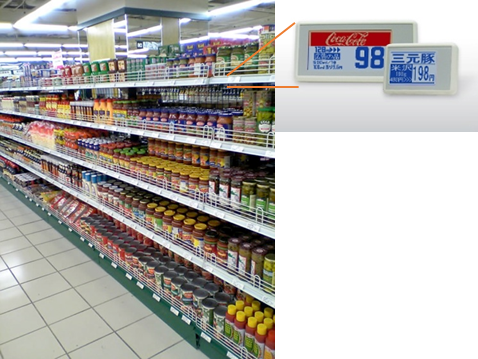
Cognitive radio (Professor Takeo Fujii)
Development of new radio communication spectrum resources by recognition, sensing, and utilization of radio spectrum that are not being used by primary systems. This technology is expected to expand the sustainable future mobile communication by generating new spectrum resources. For example innovative vehicle to vehicle communication systems, advanced wireless sensor networks and broadband mobile network services.
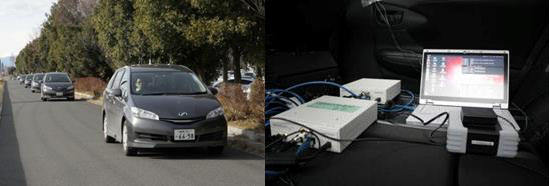
Smart DC to RF and RF to DC double conversion module based on time reversal duality (Professor Kazuhiko Honjo)
Based on the time reversal duality principle, microwave high efficiency power amplifiers with harmonic reactive loads (Class-R amplifiers) can be used also as high-efficiency rectifiers. Bi-directional wireless power transfer and information transmission are realized by the smart wireless modules developed by AWCC. The smart modules will accelerate future developments of smart grid energy supply systems, sensor systems, and wireless communication systems.
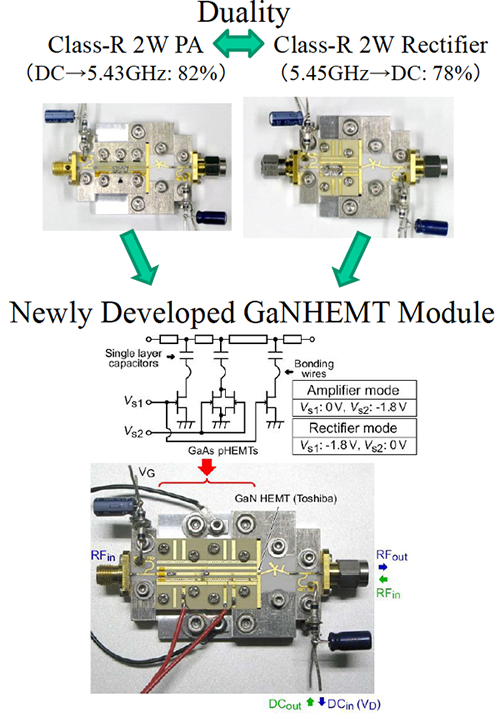
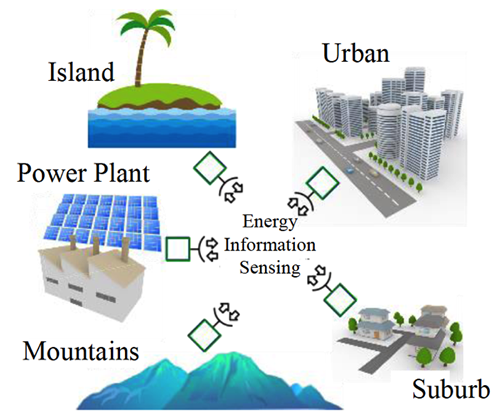
Development of Perpetuum mobile microcontroller unit (MCU) (Professor Koichiro Ishibashi)
Here, researchers have developed the 'Perpetuum mobile MCU' microcontroller with a 65 nm silicon on thin buried oxide (SOTB) structure that is capable of infinite operation. The Perpetuum mobile 32 bit CPU is expected to find applications in sensor networks and medical devices. The chip consumes only 13.4PJ/cycle at 0.35V, has a sleep current of 0.14 microamperes. The demonstration system using the MCU can operate for semi-permanently with a small solar cell illuminated inside a room.
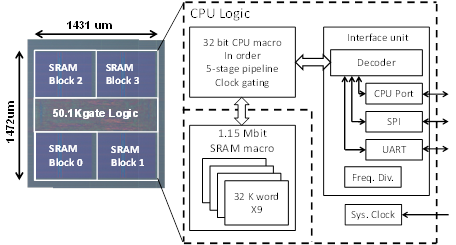
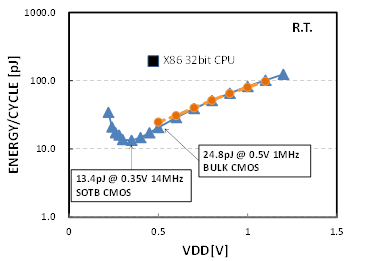
Water quality monitoring using sensor networks in Vietnam
(Professor Koichiro Ishibashi)
The aim is to develop an energy harvesting sensor network to monitor the quality of water in order to improve the yield of shrimp farming in Vietnam. The system consists of solar cells, 6 LowPAN low power wireless personal area networks, and 3G modem for transmitting emergency alarms.
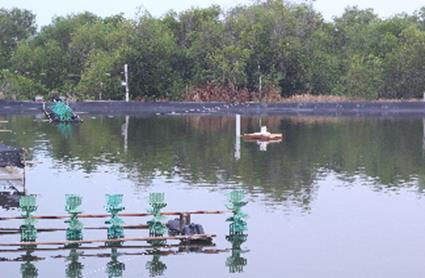
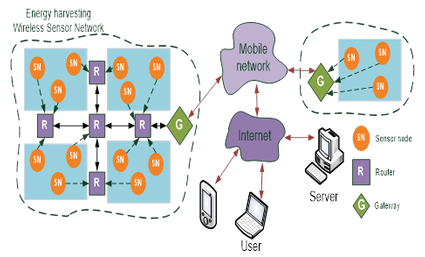
Radio frequency energy harvesting for batteryless wireless communications
(Associate Professor Koji Ishibashi)
The aim of this project is to literally realize wireless, namely batteryless wireless communications with ultimately high reliability. The key enabler of this project is an emerging antenna technology called rectenna that can harvest ambient radio frequency energy such as Wi-Fi signals and store it in a capacitor. The energy stored is then used to enhance the communication reliability and the power efficiency of the network. The researchers in this project are investigating theoretical limits of wireless communications with the rectenna technology and feasible protocols to achieve the limits.
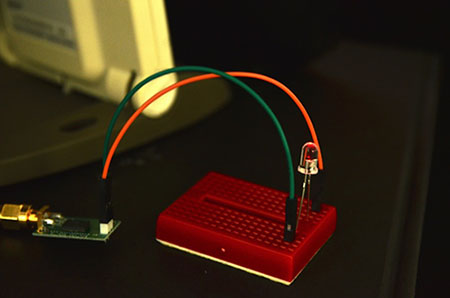
Sensor networks for measuring radiation in the environment
(Specially Appointed Professor Nobuo Nakajima)
Specific goal is to determine the distribution of temporal and spatial radiation levels in Kawauchi, Fukushima Prefecture to support decontamination operations and safety of the residents. ZigBee based sensors have been operating since May 2012 and transmitting radiation levels for three locations to UEC. Also, hand held radiation meters and sensors attached to drones have been used to produce 1D and 2D radiation distribution maps of Kawauchi since October 2012.
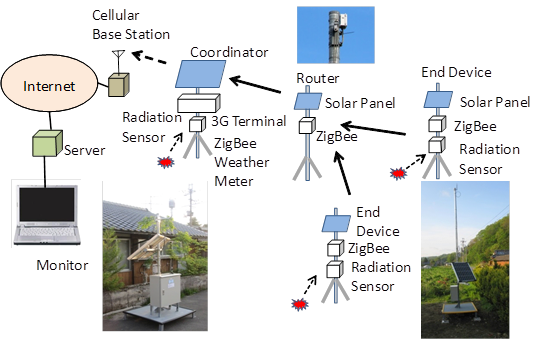
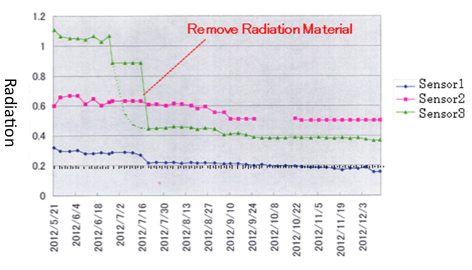
Tokyo Wireless Technology Summit 2014
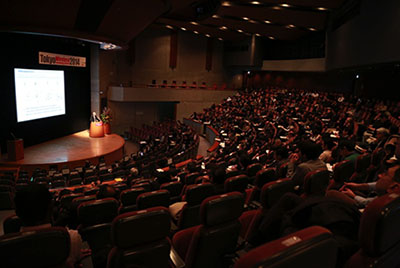
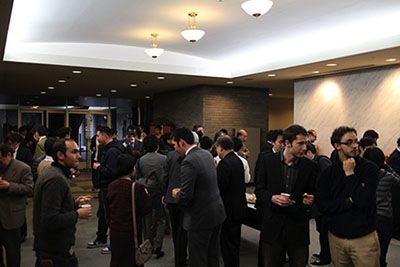
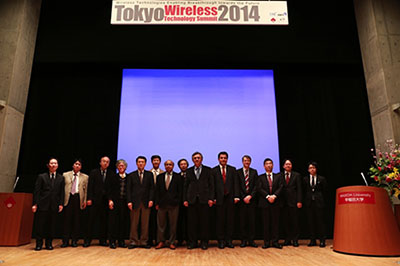
Further information
- AWCC website:
- http://www.awcc.uec.ac.jp/awcceng/index.htm
- Tokyo Wireless Technology Summit:
- http://www.awcc.uec.ac.jp/TokyoWirelessTech2014/Welcome.html
Recent publications
- [1] Yuelin Ma, Yasushi Yamao, Yoshihiko Akaiwa and Koji Ishibashi, "Wideband Digital Predistortion Using Spectral Extrapolation of Band-Limited Feedback Signal," IEEE Transactions on Circuit and Systems-I, Vol. 61, No. 7, pp. 2088-2097, July 2014.(DOI:10.1109/TCSI.2013.2295897)
- [2] Takeo Fujii, Kei Inage, Masayuki Kitamura, Onur Altintnas, Haris Kremo, Hideaki Tanaka, "Probing the Spectrum with Vehicles: Towards an Advanced Spectrum Database," in Porc. of 2013 IEEE Vehicular Networking Conference, pp. 226-229, Boston, MA, Dec. 2013. (DOI: 10.1109/ VNC.2013.6737619)
- [3] Shintaro Watanabe, Yoichiro Takayama, Ryo Ishikawa, and Kazuhiko Honjo, "A Miniature Broadband Doherty Power Amplifier With a Series-Connected Load," IEEE Transactions on Microwave Theory and Techniques, Vol. 63, No. 2, pp. 572-579, Feb. 2015. (DOI: 10.1109/ TMTT.2014.2377725)
- [4] Koichiro Ishibashi, Nobuyuki Sugii, Kimiyoshi Usami, Hideharu Amano, Kazutoshi Kobayashi, Cong-Kha Pham, Hideki Makiyama, Yoshiki Yamamoto, Hirofumi Shinohara, Toshiaki Iwamatsu, Yasuo Yamaguchi, Hidekazu Oda, Takumi Hasegawa, Shinobu Okanishi, Hiroshi Yanagita, Shiro Kamohara, Masaru Kadoshima, Keiichi Maekawa, Tomohiro Yamashita, Duc-Hung Le, Takumu Yomogita, Masaru Kudo, Kuniaki Kitamori, Shuya Kondo, Yuuki Manzawa, "A Perpetuum Mobile 32bit CPU with 13.4pJ/cycle, 0.14uA Sleep Current using Reverse Body Bias Assisted 65nm SOTB CMOS Technology," Cool Chips XVII, Yokohama, Japan, April 2014.
- [5] Nobuo Nakajima, "Radiation Distribution Measurements in Fukushima Prefecture", IEICE Transactions on Communications, Vol. E97-B, No.9, pp.1752-1758, Sept. 2014. (DOI: 10.1587/transcom.E97.B.1752)


